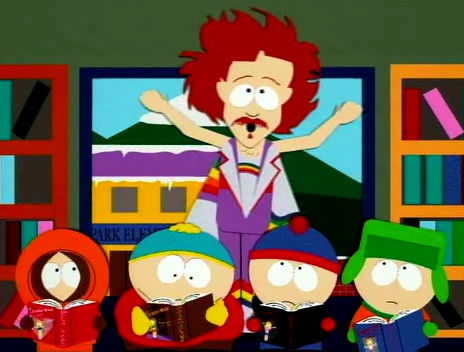During a visit to a large, international city, I was hanging out with a public health type, who pointed out some row housing visible from the building we  were in, and each one seemed to have a decent-sized garden. He said those gardens supply a lot of the produce to the high-end restaurants in the city. And they all use night soil.
were in, and each one seemed to have a decent-sized garden. He said those gardens supply a lot of the produce to the high-end restaurants in the city. And they all use night soil.
Human poop.
I wonder what kind of controls those fancy restaurants in Los Angeles are employing as the availability of backyard entrepreneurs for meat and produce increases.
As reported by the Los Angeles Times,
Locking up his station wagon, the one with the scratched paint and unpaid bills covering the floor mats, Cam Slocum crossed the parking lot and stepped into the kitchen of the swanky French restaurant Mélissein Santa Monica.
A cook set down his knife and walked over to greet the stranger. Slocum held out a Ziploc bag filled with lettuce.
"Hi," said Slocum, 50, his deep voice straining to be heard. "I grow Italian mache in my backyard. It’s really good, only $8 a pound. Would you like to buy some?"
A few feet away, chef de cuisine Ken Takayama glanced curiously at the lanky stranger in jeans and a worn plaid shirt. He’s heard this sort of pitch before (Takayama didn’t buy any).
"Every day, every week, it’s something new," Takayama said. "You name it, they have it."
Since the economy took a dive three years ago, Takayama and others say they’ve seen more and more people showing up unannounced at restaurants, local markets and small retailers, looking to sell what they’ve foraged or grown in their backyards.
No one keeps track of the number of people selling their homegrown bounty, but scores of ads have cropped up on Craigslist across the country, hawking local produce, home-filtered honey and backyard eggs.
Laura Lawson, an associate professor of landscape architecture at the University of Illinois at Urbana-Champaign says the trend harkens back to the U.S. depression of 1893, when cities encouraged owners of empty lots to let unemployed people farm them and sell the excess produce.
She said that changed during the Great Depression of the 1930s, when civic leaders, reluctant to create competition for struggling farmers, advocated gardening for food — not profit.
In Los Angeles, it’s unclear whether such entrepreneurship is legal: A 1946 zoning ordinance allowed "truck gardening" but didn’t define what that meant or identify what could be grown for sale in residential areas. Because of the ambiguity, the city has shut down some backyard enterprises, but not others.
An outcry by urban farming advocates last summer prompted Los Angeles City Council President Eric Garcetti to introduce a motion dubbed the Food and Flowers Freedom Act, which would allow people to grow "berries, flowers, fruits, greens, herbs, ornamental plants, mushrooms, nuts, seedlings or vegetables for use on-site or sale or distribution off-site."
The city’s building and safety department has stopped enforcing the old ordinance for now. The City Council is expected to vote on the proposed ordinance Friday.
No mention of microbial food safety.
 29 of the 80 meat products assessed were produced by unlicensed operators, adding,
29 of the 80 meat products assessed were produced by unlicensed operators, adding,
 see below; this song by Calgary’s Loverboy came on the radio while driving back from Nebraska and Phebus said he liked it; there’s no accounting for taste).
see below; this song by Calgary’s Loverboy came on the radio while driving back from Nebraska and Phebus said he liked it; there’s no accounting for taste). were in, and each one seemed to have a decent-sized garden. He said those gardens supply a lot of the produce to the high-end restaurants in the city. And they all use night soil.
were in, and each one seemed to have a decent-sized garden. He said those gardens supply a lot of the produce to the high-end restaurants in the city. And they all use night soil. The NSW has been targeting illicit meat processors and confiscated almost 120 kilograms of homemade nem chua – a Vietnamese-style fermented pork.
The NSW has been targeting illicit meat processors and confiscated almost 120 kilograms of homemade nem chua – a Vietnamese-style fermented pork.